Welcome to the realm of precision engineering, where the art of CNC machining meets the science of Machined Surface Finish. In this comprehensive exploration, we journey through the intricacies of this vital process, revealing its nuances and applications. As a leader in CNC machining services, Richconn is your trusted partner in achieving unparalleled quality and precision.
Machined Surface Finish is not just a technicality; it's the signature of excellence in CNC machining. Let's delve even deeper into the fundamental concepts that form the backbone of this critical aspect.
At its core, Machined Surface Finish is the culmination of precision in CNC machining. The surface quality after machining is a testament to the mastery of this art. To grasp its importance, we must first understand its definition and how it aligns with the broader context of CNC machining.
As we define Machined Surface Finish, consider it as the visual and tactile result of the machining process. It encapsulates factors such as surface roughness, waviness, and flaws that collectively contribute to the final product's quality. Achieving an optimal surface finish goes beyond aesthetics; it ensures the functionality and performance of the component, making it a crucial parameter in CNC machining.
Precision is more than a buzzword; it's a commitment to excellence. Discover why Machined Surface Finish is imperative in CNC machining, going beyond the surface aesthetics to influence product functionality, reliability, and overall customer satisfaction.
In the realm of CNC machining, precision isn't an option; it's a necessity. Machined Surface Finish serves as the visual and tactile proof of this precision. Beyond the visual appeal, the imperatives of Machined Surface Finish extend to the core functionality of the machined components. It impacts factors like friction, wear resistance, and corrosion resistance, directly affecting the longevity and reliability of the end product.
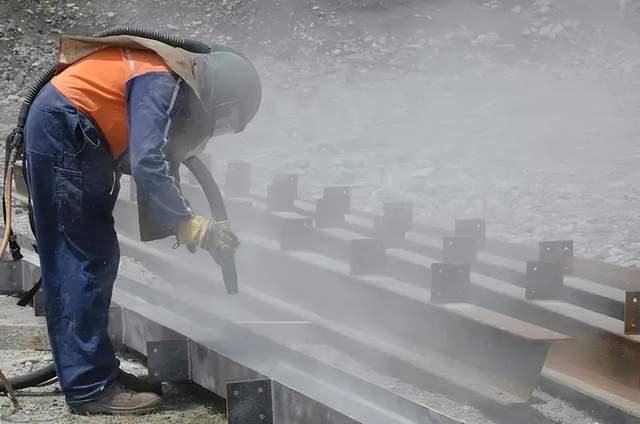
The world of CNC machining offers an array of techniques for achieving optimal surface finish. Let's take a closer look at these methods, unraveling their intricacies.
Grinding is a cornerstone in achieving precise surface finishes. Delve into the detailed workings of grinding technology, exploring specific scenarios where it excels and the range of applications it serves.
Grinding technology, characterized by abrasive particles and precise control mechanisms, is the linchpin of achieving fine surface finishes. In applications demanding high precision, such as aerospace components or medical devices, grinding reigns supreme. The controlled removal of material and the ability to attain micron-level tolerances make it indispensable in CNC machining.
Table: Grinding Techniques Comparison
| Grinding Method | Applications | Advantages | Disadvantages |
|---|---|---|---|
| Abrasive | Precision Components | High Precision, Controlled Material Removal | Heat Generation, Potential for Surface Damage |
| Cylindrical | Shaft Machining | Consistent Surface Finish | Setup Complexity, Limited to Certain Shapes |
For surfaces that demand a refined shine, polishing and abrasive machining come into play. Dive into the intricacies of these processes, understanding how they contribute to achieving the desired surface smoothness and gloss in CNC machining.
Table: Polishing vs. Abrasive Machining
| Aspect | Polishing | Abrasive Machining |
|---|---|---|
| Surface Finish | High Gloss, Smooth Finish | Controlled Material Removal, Smooth Finish |
| Applications | Aesthetic Components | Functional and Aesthetic Components |
| Speed of Operation | Moderate to High | Variable, Depending on Abrasive Used |
Sandblasting, a versatile method with applications across industries, introduces a different dynamic to surface finishing. Uncover the intricacies of this technique, exploring its applications and where it stands in comparison to other methods.
Table: Sandblasting Methods
| Sandblasting Type | Applications | Advantages | Disadvantages |
|---|---|---|---|
| Abrasive Sandblasting | Removing Coatings | Effective Coating Removal | Surface Roughening, Material Removal |
| Bead Blasting | Aesthetic Finishing | Controlled Surface Texture | Limited Material Removal, Cost |
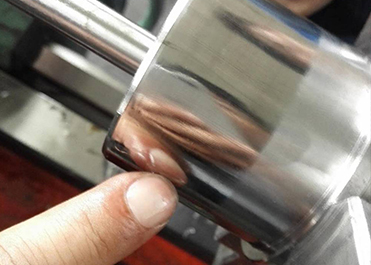
CNC machining isn't confined to a single industry; its impact reverberates across various sectors. Let's explore how machined surface finish plays a pivotal role in shaping outcomes in diverse fields.
In the manufacturing realm, machined surface finish enhances the quality and durability of components. Dive into real-world case studies and success stories that highlight the transformative power of this process.
The manufacturing sector, a melting pot of innovation and efficiency, relies heavily on machined surface finish to elevate the quality of its products. Components with impeccable surface finishes not only boast an aesthetic appeal but also exhibit enhanced performance characteristics. Take, for instance, precision gears used in machinery – a flawless surface finish ensures smooth operation, reduces friction, and extends the overall lifespan of the machinery.
From engine components to intricate parts, discover how machined surface finish elevates performance and aesthetics in the automotive industry. Uncover best practices that set industry standards.
In the automotive industry, where performance and aesthetics are equally paramount, machined surface finish plays a crucial role. Consider high-precision engine components: optimal surface finishes reduce friction, contributing to improved fuel efficiency and extended engine life. Furthermore, the visual appeal of finely finished components enhances the overall aesthetic quality of automobiles, meeting the discerning expectations of consumers.
In the aerospace sector, precision is non-negotiable. Explore how machined surface finish meets the stringent requirements of this industry, ensuring reliability and safety.
The aerospace industry operates at the cutting edge of technology, demanding components with uncompromised precision. Machined surface finish in aerospace applications goes beyond aesthetics; it directly influences the functionality and safety of critical components. Aircraft parts with exceptional surface finishes exhibit reduced wear and tear, contributing to the overall reliability and safety of air travel.
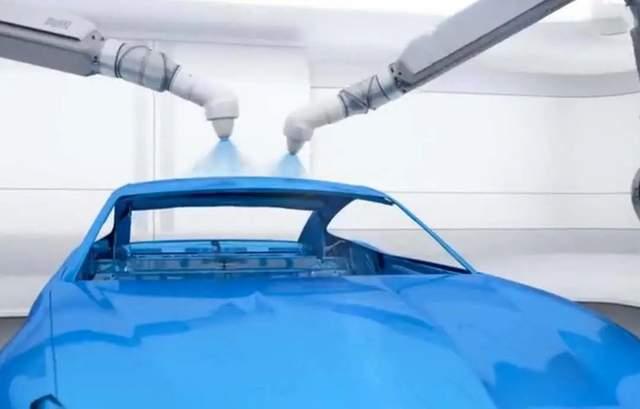
With a firm grasp of the diverse techniques employed in achieving Machined Surface Finish, it's imperative to analyze the inherent advantages and potential drawbacks of these methods.
Machined Surface Finish isn't merely a cosmetic enhancement; it's a strategic choice that brings forth a multitude of strengths.
In applications where precision is non-negotiable, such as aerospace and medical industries, the advantages of optimal Machined Surface Finish are undeniable. The controlled removal of material, whether through grinding, polishing, or advanced techniques like electropolishing, ensures that each component meets exact specifications. This precision translates into enhanced functionality, reduced friction, and improved wear resistance.
Moreover, the aesthetic appeal of components with impeccable surface finishes is a testament to the meticulous craftsmanship involved. Whether it's a finely polished automotive part or a complex aerospace component, the visual appeal often mirrors the precision and quality embedded in the manufacturing process.
However, like any manufacturing process, Machined Surface Finish comes with its set of challenges that demand careful consideration.
One notable challenge is the potential for heat generation during processes like abrasive grinding. The excess heat can lead to thermal damage, affecting the structural integrity of the component. It necessitates careful monitoring and, in some cases, the implementation of cooling strategies to mitigate these effects.
Another consideration is the delicate balance between material removal and achieving the desired finish. Aggressive techniques may result in over-removal, impacting component dimensions and functionality. Striking the right balance requires a nuanced understanding of the material properties and the chosen surface finishing method.
It's crucial to weigh these challenges against the benefits and adopt a tailored approach based on the specific requirements of the application.
Table: Pros and Cons of Machined Surface Finish
| Aspect | Pros | Cons |
|---|---|---|
| Improved Functionality | Enhanced Precision | Potential for Thermal Damage in Grinding |
| Aesthetic Appeal | Visual and Tactile Quality | Risk of Over-Removal in Aggressive Techniques |
| Increased Wear Resistance | Extended Component Lifespan | Complex Balancing Act for Optimal Material Removal |
While the benefits of Machined Surface Finish are substantial, it's essential to address the cost implications associated with these precision processes.
Opting for advanced techniques like electropolishing or vibratory finishing often requires an initial investment in specialized equipment. The acquisition and maintenance of such machinery contribute to the overall production cost. However, the long-term gains in improved efficiency and quality can often outweigh the initial financial commitment.
Table: Cost Considerations for Advanced Techniques
| Aspect | Advantages | Considerations |
|---|---|---|
| Enhanced Efficiency | Improved Surface Finish Quality | Initial Investment in Specialized Equipment |
| Long-term Cost Savings | Reduced Material Waste | Ongoing Maintenance Costs |
| Skilled Operator Requirement |
Certain advanced techniques demand skilled operators who can navigate the nuances of the process. Skilled labor often comes with higher associated costs. Moreover, the training required for operators to master these advanced methods adds to the overall human resource investment.
Table: Labor and Skill Considerations
| Aspect | Advantages | Considerations |
|---|---|---|
| Precision Execution | Consistent High-Quality Finishes | Higher Labor Costs |
| Increased Process Control | Reduced Error Rates | Training Investments for Skilled Operators |
| Potential for Skill Shortages in Specialized Techniques |
As industries increasingly prioritize sustainability, it's crucial to assess the environmental impact of different Machined Surface Finish techniques.
Certain traditional methods, such as abrasive grinding, can generate a significant amount of waste material. This waste requires proper disposal methods, contributing to environmental concerns. On the contrary, advanced techniques like electropolishing produce minimal waste, aligning with eco-friendly practices.
Table: Environmental Impact Comparison
| Aspect | Advantages | Considerations |
|---|---|---|
| Minimal Waste Production | Environmental Sustainability | Proper Disposal Procedures Required |
| Eco-Friendly Practices | Reduced Environmental Footprint | Potential Chemical Disposal Challenges in Some Techniques |
Different finishing techniques may exhibit varying degrees of compatibility with specific materials. Assessing the compatibility ensures that the chosen method aligns with the material properties, optimizing both the finish and the overall component performance.
Certain abrasive methods may be unsuitable for softer materials, risking damage or inconsistent finishes. It's crucial to select a technique that complements the material characteristics to achieve the desired outcome without compromising structural integrity.
Table: Material Compatibility Considerations
| Aspect | Advantages | Considerations |
|---|---|---|
| Tailored Material Finishes | Enhanced Component Performance | Risk of Damage in Incompatible Material-Technique Combinations |
| Process Versatility | Adaptable to Various Material Types | Increased Complexity in Material Selection |
In navigating the pros and cons, a holistic understanding of the production process and the specific requirements of the application is crucial. Each consideration, from cost to environmental impact, contributes to the strategic decision-making process for achieving optimal Machined Surface Finish.
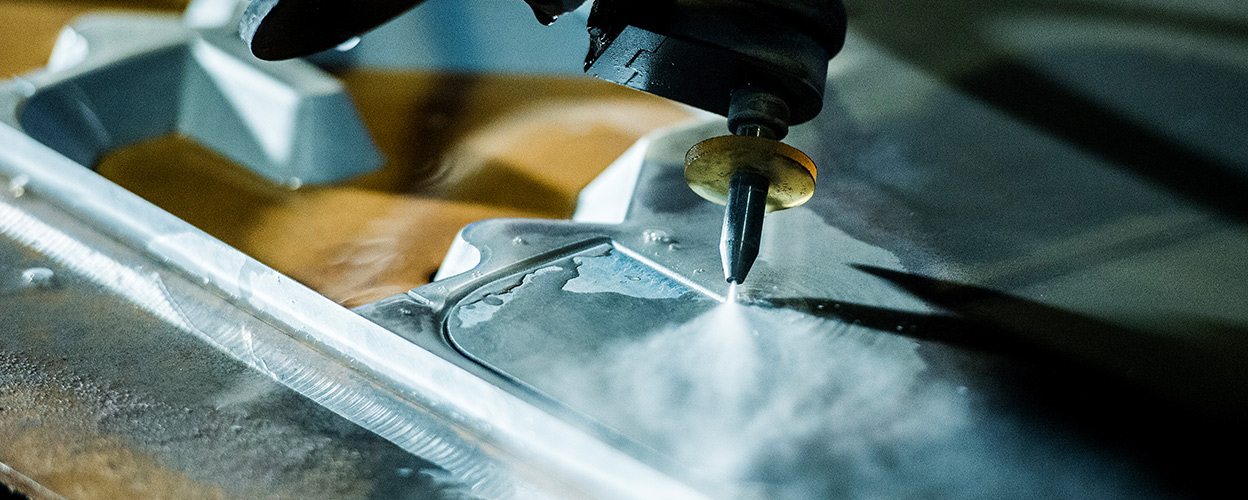
In the intricate world of Machined Surface Finish, success lies in the meticulous application of best practices and adherence to proven recommendations. Let's navigate through the essential steps and considerations that pave the way for achieving flawless surface finishes in CNC machining.
Before diving into the machining process, a thorough assessment of the component's design and material properties is paramount. Consider factors such as material hardness, geometric complexity, and end-use requirements. This pre-processing evaluation lays the foundation for selecting the most suitable surface finishing technique.
The choice of machining tools is a critical determinant of the final surface finish. Different tools exhibit varying levels of precision and aggressiveness. Tailor the tool selection to the material and design specifications, ensuring a harmonious balance between material removal and finish quality.
Fine-tuning machining parameters is an art in itself. Parameters such as cutting speed, feed rate, and depth of cut play a pivotal role in achieving the desired surface finish. Striking the right balance is crucial – too aggressive settings may compromise precision, while overly conservative parameters can lead to inefficient material removal.
Table: Machining Parameters for Surface Finish Optimization
| Machining Parameter | Optimization Approach | Considerations |
|---|---|---|
| Cutting Speed | Achieve Consistent Surface Speed | Material Hardness, Tool Material |
| Feed Rate | Maintain Consistent Feed for Precision | Material Properties, Tool Geometry |
| Depth of Cut | Gradual Material Removal for Quality | Component Geometry, Tool Rigidity |
The journey doesn't end with machining; thorough post-processing inspection is mandatory. Employ advanced inspection tools such as coordinate measuring machines (CMM) to verify surface finish quality. This step ensures that the final product meets the specified tolerances and surface finish requirements.
One common pitfall is overlooking the compatibility between the chosen surface finishing technique and the material properties. Not all methods are suitable for every material. A mismatch can result in surface damage, compromising both aesthetics and functionality.
Heat generated during machining processes, especially in abrasive grinding, can impact surface integrity. Implementing effective cooling strategies, such as coolant application or specific tool coatings, is essential to mitigate the risk of thermal damage.
Investing in state-of-the-art machinery is only part of the equation. Proper operator training is equally vital. Skilled operators understand the nuances of surface finishing, ensuring precise execution and minimizing the risk of errors.
Table: Common Mistakes and Solutions in Machined Surface Finish
| Mistake | Solutions | Considerations |
|---|---|---|
| Material-Technique Mismatch | Conduct Material Compatibility Analysis | Material Characteristics, Machining Method |
| Inefficient Cooling | Implement Effective Cooling Strategies | Machining Process, Tool Material |
| Operator Skill Shortages | Invest in Comprehensive Operator Training | Machinery Complexity, Process Knowledge |
The advent of automation has transformed surface finishing. Integrating automated systems not only enhances efficiency but also ensures consistent precision. Automated processes reduce human error and contribute to improved repeatability in achieving desired surface finishes.
Artificial intelligence (AI) is making waves in CNC machining, including surface finishing. AI algorithms analyze vast datasets to optimize machining parameters, predict tool wear, and refine surface finish quality. Exploring AI applications can lead to cutting-edge advancements in surface finishing.
As the landscape of CNC machining evolves, staying ahead requires a keen eye on emerging trends and innovations in Machined Surface Finish. Let's explore the industry's dynamic shifts and groundbreaking technologies shaping the future of precision surface finishes.
Sustainability is no longer a choice but a necessity. The industry is witnessing a shift towards sustainable surface finishing methods that minimize environmental impact. Techniques like eco-friendly blasting, which utilizes recycled materials, are gaining traction.
Hybrid machining, combining additive and subtractive methods, is revolutionizing surface finishing. 3D printing followed by precision machining allows for intricate designs and precise finishes. This approach caters to industries requiring complex, high-quality components.
Table: Trends in Machined Surface Finish
| Trend | Implications | Considerations |
|---|---|---|
| Sustainable Finishing Methods | Reduced Environmental Footprint | Compliance with Environmental Standards |
| Hybrid Machining Processes | Precision in Complex Component Designs | Compatibility with Material Characteristics |
Nanotechnology is pushing the boundaries of surface finishing. By leveraging nanoparticles, surface finishes with unprecedented smoothness and precision are achievable. This technology finds applications in critical industries such as medical and aerospace, where microscopic details matter.
AR is making waves in quality assurance during surface finishing processes. By overlaying digital information onto the physical components, operators can visually assess and ensure that surface finishes align with precise specifications. This not only enhances efficiency but also minimizes errors.
Table: Innovative Technologies in Machined Surface Finish
| Technology | Applications | Considerations |
|---|---|---|
| Nanotechnology | Medical and Aerospace Components | Compatibility with Material Properties |
| Augmented Reality | Real-time Quality Assurance | Operator Training and Integration |
The CNC machining industry, like many others, is grappling with global supply chain disruptions. From material shortages to delayed shipments, these challenges impact the timely availability of resources for surface finishing processes. Strategizing for resilience and exploring alternative sourcing options is crucial.
As technologies advance, a widening digital skills gap becomes apparent. Adopting cutting-edge technologies requires skilled personnel. Investing in training programs and collaborating with educational institutions can address this gap, ensuring the workforce is equipped to harness the potential of innovative surface finishing methods.
Table: Industry Challenges and Mitigation Strategies
| Challenge | Mitigation Strategies | Considerations |
|---|---|---|
| Global Supply Chain Disruptions | Diversification of Suppliers, Strategic Stockpiling | Flexibility in Sourcing Strategies |
| Digital Skills Gap | Training Programs, Collaboration with Education | Continuous Learning and Development |
As we peer into the future of Machined Surface Finish in CNC machining, strategic considerations and foresight become pivotal. Navigating the path ahead involves anticipating challenges, embracing innovation, and aligning with industry shifts.
Smart manufacturing, driven by the Industrial Internet of Things (IIoT), is set to revolutionize surface finishing. Real-time data analytics, predictive maintenance, and automated decision-making will become integral to achieving consistent, high-quality surface finishes. CNC machining facilities must prepare for this paradigm shift.
The advent of quantum computing holds promise for unparalleled precision control in surface finishing. The ability to process vast datasets at speeds unattainable by classical computers opens avenues for optimizing machining parameters, tool paths, and surface quality with unprecedented accuracy.
Table: Future Technological Advancements
| Advancement | Implications | Considerations |
|---|---|---|
| Smart Manufacturing | Real-time Data Analytics and Automation | Investment in IIoT Infrastructure |
| Quantum Computing | Precision Control Beyond Classical Limits | Integration with Existing Systems |
As the industry becomes more interconnected, collaboration among stakeholders is paramount. From material suppliers to equipment manufacturers, forming strategic partnerships fosters innovation and ensures a seamless flow of resources for surface finishing processes.
The pace of technological evolution demands a commitment to continuous learning. Industry professionals must stay abreast of emerging technologies, attend training programs, and engage in knowledge-sharing forums to harness the full potential of advancements in Machined Surface Finish.
Table: Strategic Considerations for Industry Players
| Consideration | Implications | Considerations |
|---|---|---|
| Collaboration and Partnerships | Innovation and Resource Optimization | Alignment of Business Goals |
| Continuous Learning | Adapting to Technological Evolution | Investment in Employee Development |
While technology advances, the role of skilled craftsmanship remains indispensable. The nuanced artistry in achieving specific surface finishes, especially in industries where aesthetics matter, highlights the enduring importance of skilled artisans.
The future envisions a harmonious collaboration between humans and machines. Skilled operators will leverage advanced technologies, contributing their expertise to fine-tune processes, troubleshoot, and ensure the quality of surface finishes meets the highest standards.
Table: The Human Element in Future Surface Finishing
| Element | Implications | Considerations |
|---|---|---|
| Skilled Craftsmanship | Aesthetic Precision and Expertise | Recognition of Artistic Contribution |
| Human-Machine Collaboration | Optimization of Precision Processes | Training Programs for Operator Skillsets |
The future of Machined Surface Finish in CNC machining holds exciting possibilities. Industry players who strategically navigate technological advancements, foster collaboration, and invest in continuous learning will not only meet the challenges ahead but shape the landscape of precision engineering for years to come.
In keeping with these advancements, various surface finishing techniques such as blackening surface treatment, electrophoresis finish, and innovative CNC machining surface finishes are continually evolving to provide better quality and aesthetics. Moreover, the selection of materials is crucial, and finding cheap CNC materials that do not compromise on quality is essential for cost-effective production. Additionally, the rise of specialized services like those offered by CNC plastic machining factories highlights the industry's adaptability and commitment to meeting diverse machining needs.
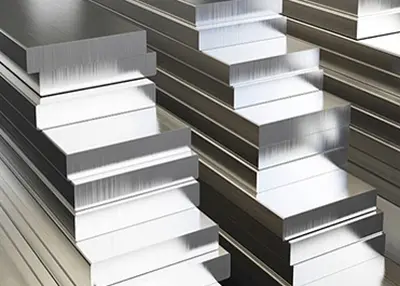 All About Hardness Definition: Types, Testing Methods & UnitsOctober 12, 2023Here is an in-depth overview of hardness definition. Follow this article to learn metal hardness for different materials and choose the suitable one for your project.view
All About Hardness Definition: Types, Testing Methods & UnitsOctober 12, 2023Here is an in-depth overview of hardness definition. Follow this article to learn metal hardness for different materials and choose the suitable one for your project.view What Is Mechanical Rack: Picking the Best for Your Custom PartsMay 22, 2024Delve into the world of equipment racks with this comprehensive article. Learn about their structure, design principles, materials, manufacturing processes, installation, commissioning, and more.view
What Is Mechanical Rack: Picking the Best for Your Custom PartsMay 22, 2024Delve into the world of equipment racks with this comprehensive article. Learn about their structure, design principles, materials, manufacturing processes, installation, commissioning, and more.view Shenzhen International Industrial Automation and Robot Exhibition 2023August 14, 2023The SIA 2023 Shenzhen International Industrial Automation and Robot Exhibition will be grandly held at the Shenzhen Convention and Exhibition Center from December 1-3, 2023. The exhibition covers indu...view
Shenzhen International Industrial Automation and Robot Exhibition 2023August 14, 2023The SIA 2023 Shenzhen International Industrial Automation and Robot Exhibition will be grandly held at the Shenzhen Convention and Exhibition Center from December 1-3, 2023. The exhibition covers indu...view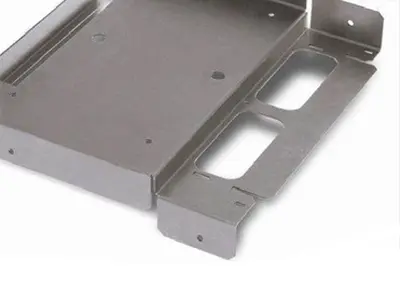 Authoritative Guide to Tack Welding & Efficient Welding ProcessSeptember 19, 2023Welding is a long-standing process that remains essential in various industries. Manufacturers employ different types of welds depending on the project's requirements. Tack welding is particularly...view
Authoritative Guide to Tack Welding & Efficient Welding ProcessSeptember 19, 2023Welding is a long-standing process that remains essential in various industries. Manufacturers employ different types of welds depending on the project's requirements. Tack welding is particularly...view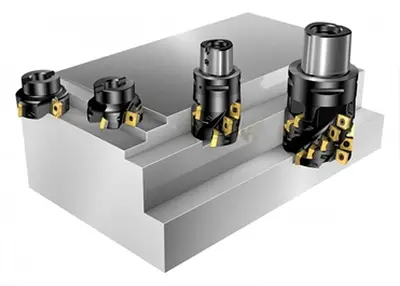 What Are the Processing Principles of Precision Machining?December 30, 2022What are the processing principles of precision CNC machining? What safety precautions are there when performing precision CNC machining?1. Processing principles of precision NC machining (1) In order...view
What Are the Processing Principles of Precision Machining?December 30, 2022What are the processing principles of precision CNC machining? What safety precautions are there when performing precision CNC machining?1. Processing principles of precision NC machining (1) In order...view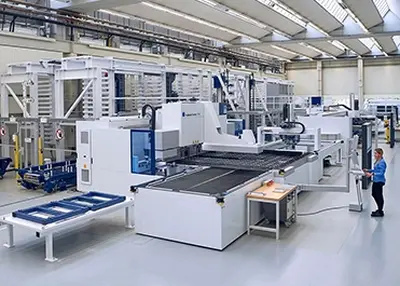 CNC Machining Services and Engineered Machined Products: Meeting Manufacturing NeedsNovember 7, 2023Are you looking to understand the world of CNC machining and engineered machined products better? You're in the right place! I'm here to guide you through the intricate world of CNC machining, engineered machined products, and how Richconn can be your trusted partner in this journey.view
CNC Machining Services and Engineered Machined Products: Meeting Manufacturing NeedsNovember 7, 2023Are you looking to understand the world of CNC machining and engineered machined products better? You're in the right place! I'm here to guide you through the intricate world of CNC machining, engineered machined products, and how Richconn can be your trusted partner in this journey.view